By Gerry Aldridge
 When I embark on a new sculpture, its inception is usually an accumulation of ideas, and the start of the process may date back many years. As I become more adept, I am able to incorporate more ideas into my work, many of which were first conceived back in my teens.
When I embark on a new sculpture, its inception is usually an accumulation of ideas, and the start of the process may date back many years. As I become more adept, I am able to incorporate more ideas into my work, many of which were first conceived back in my teens.
These ideas can come to me at any time. I still haven’t gotten into the habit of carrying around a pen, so quite often the last twenty minutes on a bus are spent making mental notes. Once home, I race to the computer, or to my wife’s kitchen board, or get the thoughts down on a scrap of paper. For future use, the paper will be filed away into one of a number of drawers and pots scattered around the house.
While focusing on a particular piece, other ideas may come to me, various tangents and approaches to the original idea. This is how a collection is born. For example, the collection I am presently working on is called “The Party,” and while I am inventing new characters, others keep inviting themselves. These diverse characters will represent a unique and paradoxical oneness:
Once I have my ideas, I may do some research on the internet before starting with a very basic clay model. The photos below were taken while I was teaching a class:
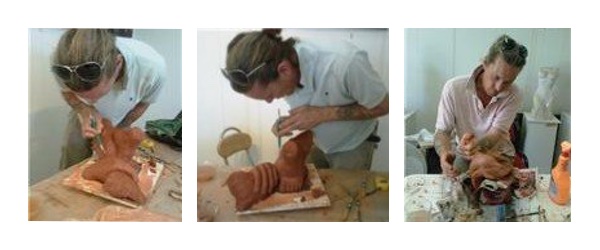
While I love the feel of clay, it is a medium I find too fragile. Primarily I make use of it only to establish a rough 3d representation which will be constructed from stone.
My artelier is the actual mason yard. Few people would have a home or garden large enough to accommodate all the dust and bits of stone, the amount of mess and space needed to sculpt, the reason relatively few people may be able to attempt this kind of work. And here in Portugal the stone is so cheap, I have been able to afford to to experiment, so there is always stone at my disposal – as well as headless horses and people, and other of my mistakes littered all over yard.
Choosing the right stone is an exacting part of the construction process, and I can spend much time wandering around the stone mason’s yard until I stumble upon the perfect piece.
After drawing an outline, I then start cutting with an angle grinder. After cutting away the excess, I switch to a smaller tool called a Die Grinder. This grinder, replete with multiple different-sized heads, is used for all detailing work.
And there is no avoiding good old elbow grease; once the finished form is achieved, the only way to hone the stone’s surface and curves, and to eliminate any marks left by the grinder, is with sandpaper. For the final polishing, I apply a special wax with a soft head on the angle grinder, so that the colors will pop.
So what about all the little nooks and crannies where the angle grinder cannot reach? For this, there are two options: a small Dremmel machine with a soft head and the same wax, or an auto-polish product, which can be applied with a small brush for a more polished effect.
My preferred medium is stone because of its texture and durability. Each stone has to be worked in a different way, as some are dense and thus easier to manipulate, while others are brittle and require much skill to shape. Even with careful hands, some stone still breaks, and I have to either improvise or start over again. I also love stone because, while it may be tough, it can be riddled with flaws and weaknesses just as we human beings can be.
Aldridge is also the author of Kill Daddy, available now on Amazon.

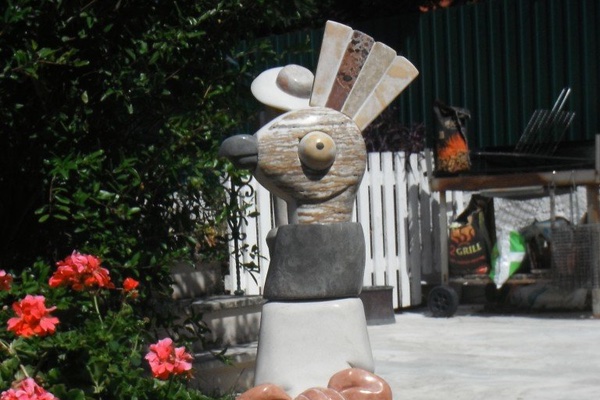
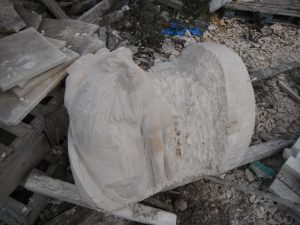
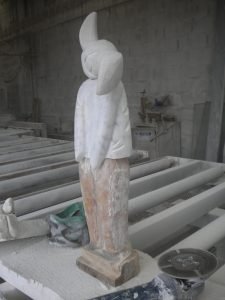
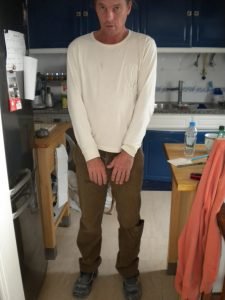
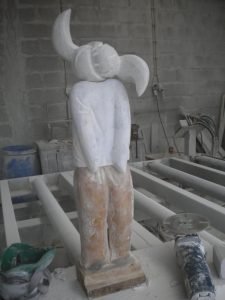
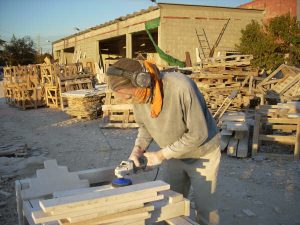
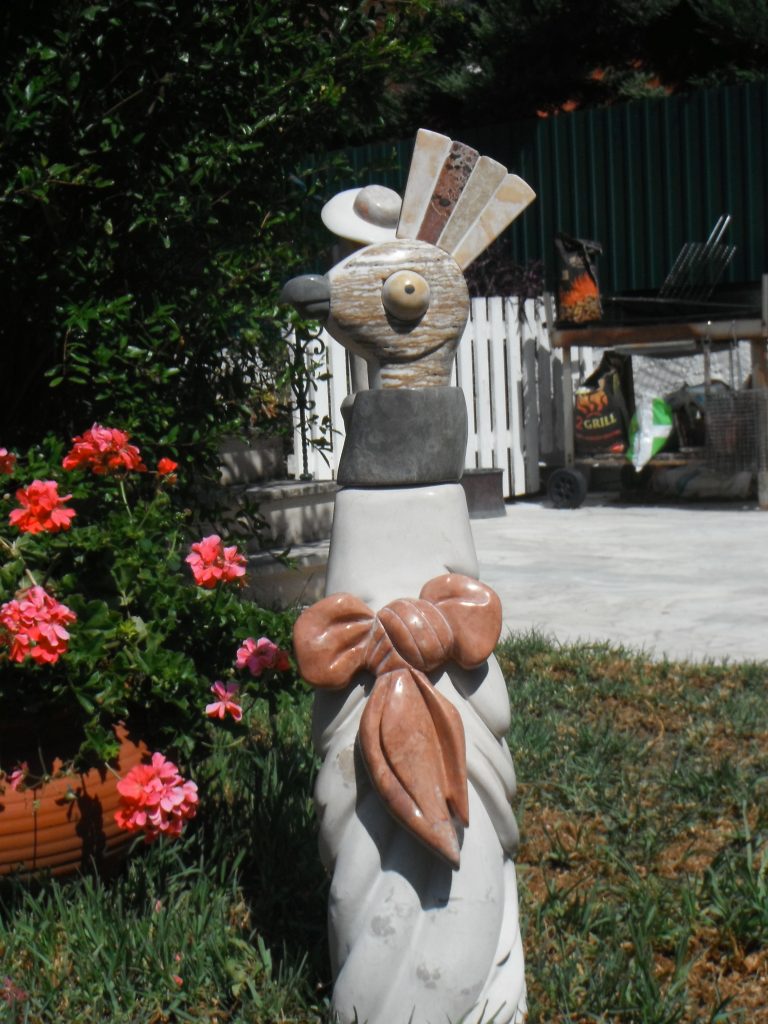
What good publicity !
So proud of you!
Woven Tale Press is sorely missed here in Portugal along with the likes of Brick Lane Gallery!
Amazing pieces of Art (ist)…